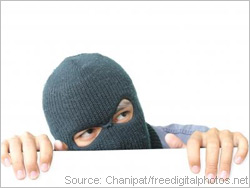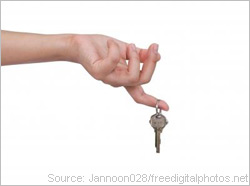
We think of our homes as our havens--the places we retreat to for
warmth and security. However, your house is only as safe as you make it. The
following tips will help you protect your home from burglars, fires, and other
hazards to keep you and your family safe.
Exterior Lighting
Making sure your property is well-lit will not
only discourage burglars, but prevent injuries due to falls. Install landscape
lighting around your walkways and near your stairs to illuminate your path. This
can decrease your chances of sustaining a nasty fall while lugging bags of
groceries to your door after dark.
A dark home appears unoccupied and
encourages burglars--they won't be visible as they sneak onto your property.
Install light fixtures on the front, back, and sides of your home to illuminate
any possible entrances. You can set the lights on a timer, so they will switch
on even when you aren't home, or purchase motion-sensor lights, which will turn
on whenever anyone approaches.
Alarm systems
Installing an alarm system in your home is one of
the best ways to be safe and secure. You will have 24-hour protection whether
you’re at home or away. If your alarm goes off, the alarm system company is
notified immediately, and then the police are called.
TIP: If you cannot afford a costly
security system, putting an alarm company's decal on your windows will deter
intruders just the same. No potential burglar will take that chance.
Check locks and bolts

Making sure your doors and windows are secure may be the most
important part of protecting your home. The main entrances to your home should
have a sturdy, high-quality deadbolt lock with a hardened steel insert and a
minimum throw of one inch. Double exterior doors should be equipped with a
vertical throw deadbolt and all locks should have a five-pin tumbler. If your
home has sliding doors, you should have a lock that prevents the door from being
pried open or lifted off of the track. Speak with a locksmith or a clerk at the
hardware store about your options to ensure you get what you need.
If you
have just moved into your home, it is imperative that you
change the locks. You never know how many people possess keys
to your new residence, and you will sleep much better knowing that they no
longer have access. You can also re-key the locks as an alternative--kits can be
purchased at any hardware store and can be completed by the homeowner with
several simple steps.
Fire Safety
Keep your family safe from the possibility of a
devastating fire by taking the proper precautions. Install high-quality smoke
alarms in every area of your home--including the upstairs, the kitchen, and the
basement. Be sure to test the smoke alarms monthly to verify that they are
working properly and have fresh batteries. It's also important to have fire
extinguishers in easily accessible locations, have a fire escape route planned,
and practice fire drills with your family.
Check for hazards
Inspect your home for any dangerous conditions
or easily overlooked hazards. Check staircases for shaky banisters, and check
the floors for protruding nails or loose boards. You should carefully check all
walking surfaces in your home--are they all level? Is your carpeting slackened
or rippling? Are there any stray wires or assorted clutter that present a
tripping hazard? Are all walkways and stairways well-lit and clear? Make any
necessary repairs to reduce the likelihood of falls in your home and ensure the
safety of your family.
Childproof cabinets
If you have young children, you know that
their curious hands pry at everything.
Childproofing your home is essential to keep toxic chemicals
and sharp objects out of your little one's delicate hands. Keep safety locks on
all low-level cabinets, and store cleaning products and medicines in high-reach
places. If you have very young children, locks on the toilet, stove knobs, and
safety guards for sharp tables edges and corners are also crucial for
safety.